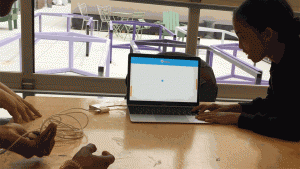Nathaniel Padgett
Open Kinetics are low cost kits that inspire learners of all ages to explore programming and electronics through movement-based play. The aim of Open Kinetics is to create an affordable, accessible, engaging platform that teachers can easily bring into their classrooms to foster technological agency in their students.
https://itp.nyu.edu/thesis/journal2018/stefani/author/ngp249/
Description
An exciting aspect of the rapid proliferation of technology over the past decade is that much of it is open and remixable by anyone with access to a computer and the internet. This has created unprecedented opportunities for anyone to contribute to and use these technologies for research, to start businesses, or to make art.
But despite these advances, access to technology is still largely concentrated in the wealthiest communities. A major reason for this digital divide is cost. Open Kinetics addresses this problem with engaging DIY technology kits designed to be affordable and accessible. Students learn programming, electronics, and design by making a simple motion controller used to play free movement-based games that they can also remix and build themselves. Through building these kits, they learn to use technology for their own creative ends, developing technological agency and preparing them for careers of the future.
By pairing hardware with games, Open Kinetics kits give context to what students can do once they have built their controller. Open Kinetics give students a virtually endless array of experiences to choose from, whether moving a character, playing virtual tennis, or making kinetic art. Because these games are movement-based, they engage students in active, physical participation that facilitates learning. Built for kids ages 8-16 but great for all ages, Open Kinetics turn players into makers and empowers students to contribute to rather than simply consume technology.
One simple project for Open Kinetics is a twist on the Atari classic Pong. In this game has players move paddles up and down the screen to deflect a puck and prevent their opponent from scoring. Rather than using joysticks or buttons, players use the Open Kinetics motion controller they build to move the paddles with their arm movements, making a sedentary game into an active one.
Classes
Thesis

